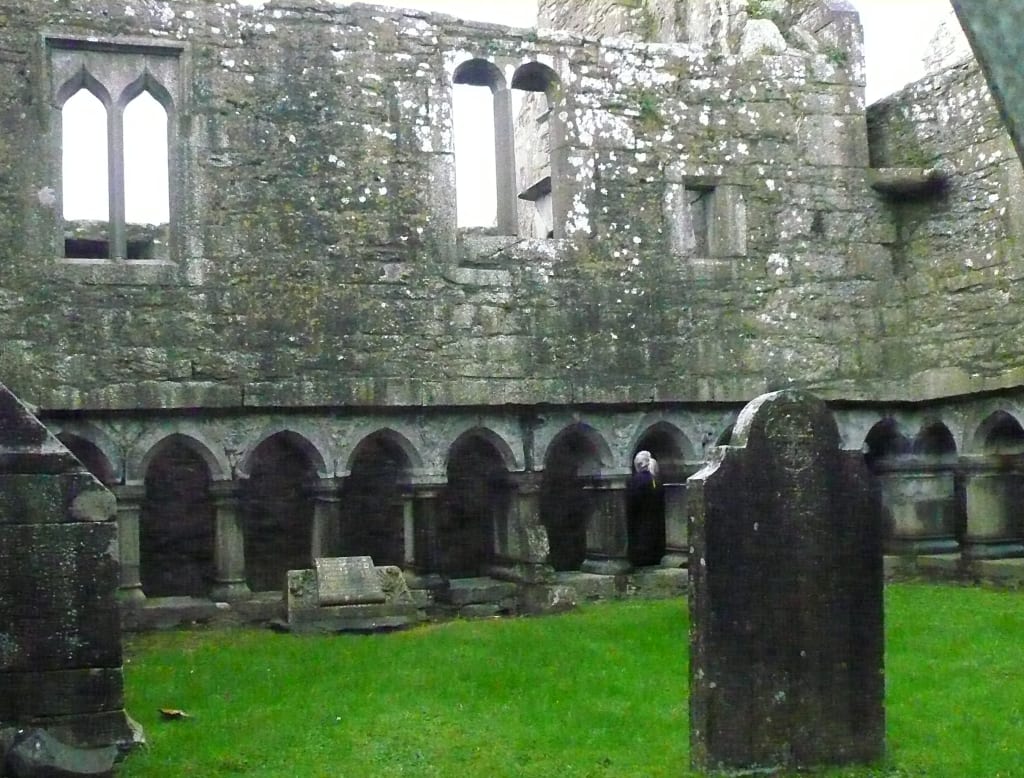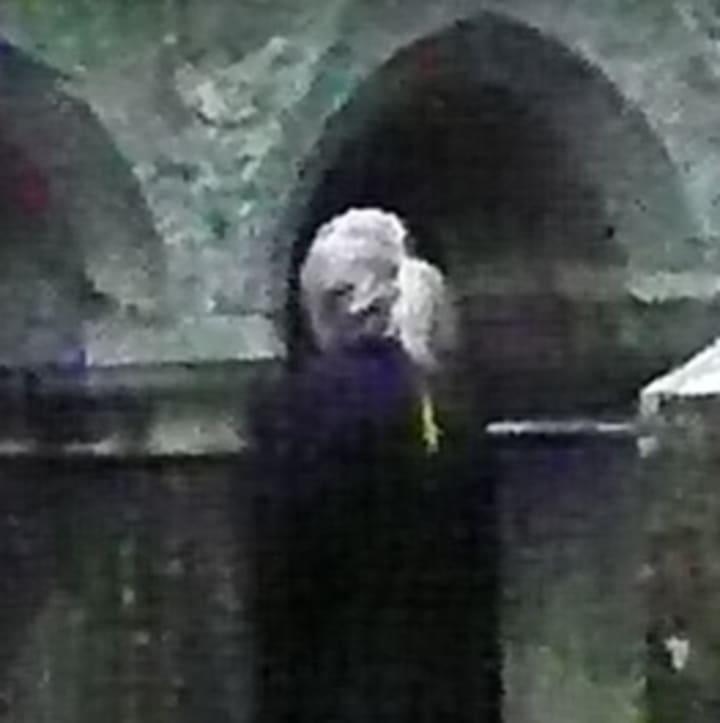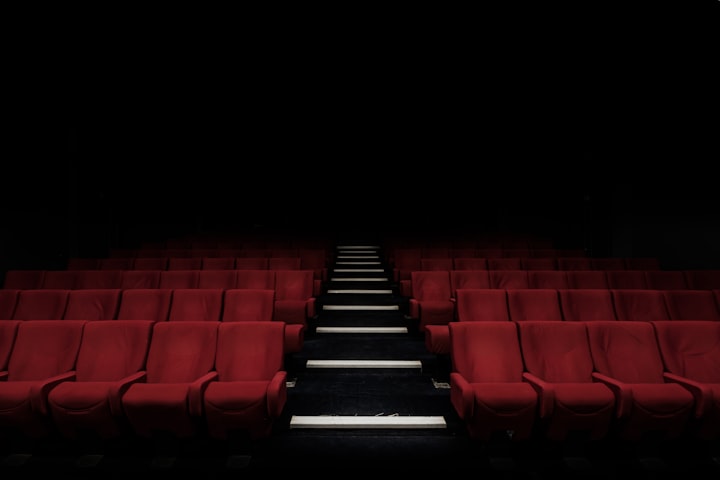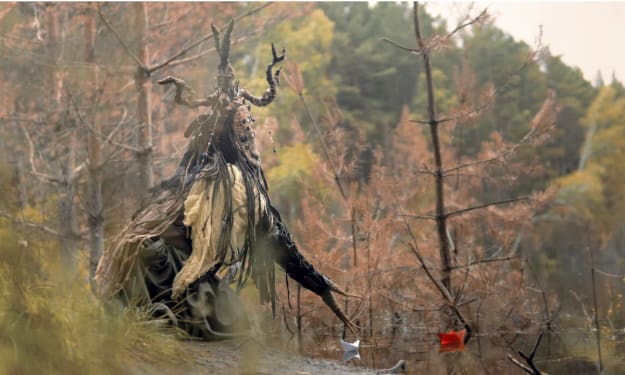The time I caught a ghost on camera
It took me a while to admit what I was seeing. If it really was a ghost, what did it mean for me?

The summer before my eleventh birthday was the first time I encountered a ghost.
Well, sort of. I was on a camping trip with my Girl Scout troop on Johnson’s Island, a tiny patch of land in Lake Erie. During the Civil War, the North built a prison camp for captured Confederate officers on Johnson’s Island, and a Confederate cemetery remains there today. Next to the graveyard is a cabin, and in the cabin is where I was staying with a dozen other ten-year-olds on an overnight trip. Unfortunately, it drizzled throughout our first day, so we were bored. Some girls cut through the graveyard to a walking trail. Suddenly, two girls came running from the woods, screaming that they had seen a ghost—a young soldier in the blue jacket worn by Union troops who once patrolled the island prison.
Our Girl Scout leaders tried to convince us there was no such thing as ghosts, but their reasoning was lost on a bunch of fifth graders. They told us to stay out of the cemetery and tried to reroute our attention to other activities. No one slept well that night, including me. But not because I was scared. In the middle of the night I tiptoed to the window, hoping I would also get to see the ghost. The funny thing about ghosts, though, is that sightings only seem to happen to people who aren’t looking. I went home disappointed, and the girls later admitted that maybe they were imagining things.
Fast forward one decade, then two. As a young adult, I encountered people who described themselves as “spiritual, but not religious.” I was neither. I barely went to church, unless attending Midnight Mass drunk on Christmas Eve with my equally inebriated cousins counts. But I also didn’t believe in ghosts. I also didn’t believe in clairvoyants, astrology, tarot cards, or people who claimed they could speak to the dead—manipulating police and desperate, grieving families in the process.Look no further than world-famous “psychic” Sylvia Browne telling Amanda Berry’s mother that her daughter was dead. As we know now, Berry was alive, one of three women held captive in a home in Cleveland, Ohio, for more than 10 years. They were discovered in 2013 after Berry managed to escape and call police—but by then, her mother had passed away, having giving up hope of ever finding Amanda.
I was still interested in history and loved to visit historical sites, but I disdained the people who were there for the ghosts. As a frequent visitor to places like St. Augustine, the oldest city in Florida, I skipped the “ghost walks” to the ruins of Castillo de San Marcos, a fort built by the Spanish military. While I wasn’t exactly sure what happened to people when they died, I sure hoped the afterlife wouldn’t involve hanging out in a tourist trap in Florida. Is that really all we have to look forward to for eternity? I thought. Sounds awful.
There was also the exploitation factor. Many “haunted” sites were once home to people we still deem “scary,” often because of their mental illness or disabilities. When I was a student at Ohio University, it was popular to go on a “ghost tour” of The Ridges, an abandoned asylum near campus. As a student of history, I knew the gruesome history of asylums, where helpless individuals were subjected to medical experiments and other human rights abuses. Asylum inmates were displayed for the amusement of jeering spectators, who treated them like sideshows at a circus. These people had suffered enough in life. Why were we still trying to gawk at them in death?
Good question, and one I still ask paranormal fans today. But my stand on ghosts hit shaky ground one night in January 2014, when I found myself home alone and bored. I started organizing old photo files on my laptop, starting with pictures from a family trip to Ireland in 2010. They weren’t very good pictures. The digital camera I had purchased for the trip produced images that were blurry and low-quality. The color looked “off.” I thought maybe I could use editing software to improve the photos. And then, in a picture from Ross Errilly Friary in Connemara, I spotted something.
“Who is that?” I mumbled to myself. At first glance it looked like a woman with a white ponytail in a black coat. When I zoomed in, though, the person in the photo was translucent, a glowing white. I wasn’t sure of the gender; it could be a woman, or it could just be a man with long hair. The figure was facing away from the camera and appeared to be hovering over the outer stone wall of the friary, as if floating. She—or he—was not wearing a coat, but a long, shapeless robe. Dangling from the back was a bright gold cross.

I shook my head and told myself I was seeing things. This had to be another low-quality picture, causing the person to look translucent. But what kept nagging at me was the clothes and hair: no one in our mostly American, very 2010 tour group had been dressed like a friar. I even looked into whether Ross Abbey had tour guides who dressed up to play the part—they do not. His hair look matted and overgrown, more suitable to the days when people didn’t use shampoo or get regular trims. I did some research and found out the clothing looked like the robes the friars at Ross Errilly (also called “Ross Abbey”) wore in the 1400s. I also read about the history of Ross Abbey and learned it had been used as a hiding place for Catholic clergy escaping British persecution.
“Life at Ross Errilly was disrupted by the English Reformation,” Ross Abbey’s Wikipedia entry says. “The Franciscans had loudly opposed King Henry VIII's break with Rome, which would prove costly after the schism. In 1538, English authorities imprisoned two hundred of the monks and banished or killed an indeterminate number of others. The rest of the Franciscans' history at Ross Errilly would be marked by repeated evictions and other persecutions.” By the 1800s, travelers described the Abbey’s ruins as “disgracefully neglected,” with moss-covered human skeletons littering the courtyard in my photo.
Yikes. Ghost hunters say that spirits who refuse to depart their earthly domains stay because they have “unfinished business” there, which often amounts to a centuries-old grudge. The friars at Ross Abbey could easily fit the profile! At this point, I was thoroughly “creeped out,” as we liked to say in 2014. I posted the picture on Facebook, subconsciously hoping people would comment to explain that I was wrong, and that exposure or color settings can make human beings look like ghosts on film. In fact, my original intent in posting the photo was to attract a bunch of male commentators calling me “crazy.” Men are allowed to have quirky interests like ghost hunting, but when women do it, it’s used against her as evidence she’s off her rocker. I was going to write a piece on the double standard.
Instead, people agreed: That’s creepy. That’s strange. Why is he white? Is he levitating? That definitely looks like a ghost. A Facebook friend who belonged to an official “paranormal society” asked to see the original photo. I sent him the original file from the memory card. He asked “paranormal investigators” to examine the picture, and their verdict was unanimous and decisive: it’s a ghost. Visitors to Ross Abbey had been reporting seeing the spirit of a white-haired friar in a long, dark frock. To my knowledge, I was the only one to actually capture a photo of this notorious apparition—completely on accident. It took me over three years to even notice the ghostly figure with a cross necklace.
It shook my spiritual beliefs to the core. If I was forced to concede that ghosts exist, I had to wonder what they wanted here. Earth is an ugly place, and you have to wonder why anyone would want to hang around, especially at a place like The Ridges asylum or Ross Abbey, where hundreds of monks were murdered, their bones scattered around the yard. I started imagining a world full of angry disembodied spirits who refused to depart for “the other side” because they were angry. The fact that this particular ghost had decided to show up on my camera unnerved me. Why me? I was a 28-year-old woman who was dealing with a troubled marriage and a chronic feeling that luck was not on my side. The last thing I needed was a ghost on my case.
This went on for a while until I did some spiritual digging and chose to view it in a different light. Maybe the Ross Abbey friar was not an angry ghost with an ax to grind against unsuspecting tourists. If he had been one of the friars murdered by British colonizers in the 1500s, the fact that he was still there—still wearing his cross—was a powerful message. Do you remember the line from Braveheart, “They may take our lives, but they’ll never take our freedom”? Maybe killing your enemies, overthrowing their leaders, and plundering their land will come back to haunt you—literally. Even if you get your way in this life, you’ll still have to answer for your deeds in the next. That’s a formidable thought to anyone who knows they’re on the side of the oppressor.
As for the ghost on Johnson’s Island that haunted our Girl Scout adventures, the girls who allegedly saw him said he wore a blue coat—a Union uniform. It took me over twenty years to find out that one of the Union guards on Johnson’s Island was my third great-grandfather, William Chambers. William Chambers voluntarily enlisted in the Union Army when he was technically too young to be drafted. After being severely wounded in his first tour of duty, he re-enlisted, and went on to guard captured Confederate officers at Johnson’s Island. The guards enjoyed messing with Southerners by threatening to take them out on a rowboat and throw them to the sharks in Lake Erie. (There are no sharks in Lake Erie, but the prisoners didn’t know that.)
He did all this despite being an Irish immigrant who had no stake in America’s war. He served honorably in the military and was a devoted father of ten children, so I doubt he chooses to hang out on Johnson’s Island for all time. Who knows? Maybe he knew I was there and decided to make his presence known.
If we look at it that way—ghosts as spiritual guides and helpers, rather than antagonists—we don’t have to fear them, and knowing they’re still around can give us courage. Especially when they faced battles tougher than we can imagine.
About the Creator
Ashley Herzog
If you like my work, feel free to tip your writer.
Reader insights
Nice work
Very well written. Keep up the good work!
Top insights
Eye opening
Niche topic & fresh perspectives
On-point and relevant
Writing reflected the title & theme






Comments (1)
This is really interesting and I just found it with Halloween coming up